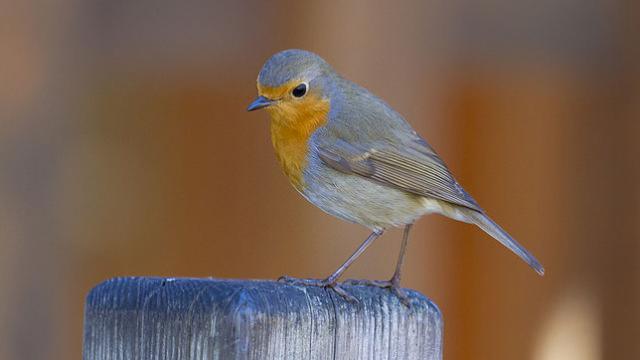The air is thick with electromagnetic noise these days. AM radio waves, the electromagnetic hum of computers — it’s invisible to us, but birds seem to detect them with their internal magnetic compass. A new study finds that electromagnetic noise disorients European robins, raising the intriguing and frightening possibility that our cities and their signals could be disrupting the annual bird migration.
It started as a failed science experiment. When Henrik Mouritsen moved from rural field sites to University of Oldenburg in a German city, his tests with robins suddenly stopped working. Migratory birds can navigate with the help of an internal magnetic compass, but his birds were now behaving as if they had no idea which way was north or south. He tried everything — from altering diets to lighting to the shape of the experimental cages. The only thing that worked as taking the birds out of the city and into the backwoods.
The breakthrough finally came with an aluminium screen. The screen made up part of a Faraday cage, and with the screen in place, the magnetic compasses of the birds in the city worked again. This was seven years ago. Mouritsen and his team have spent the time since checking and rechecking their experiments to rule out a fluke.
Where exactly does the disruptive “electrosmog”, as Mourtisen calls it, come from? They have ruled out Wi-Fi, mobile phone signals and power lines based on their frequencies. That leaves things like AM radio and electromagnetic fields from electronic such as computers, printers and refrigerators remain as possible suspects.
People have complained about electromagnetic sensitivity, but as Ed Yong points out at his blog for National Geographic, there is no definitive scientific proof humans are affected by it. This is some of the first evidence that an animal can find artificial electromagnetic fields disruptive.
It’s not yet clear how this affects birds in the wild, who have to fly thousands of miles in their annual migration, but it certainly suggests that cities be affecting wildlife in ways we ourselves can’t detect. To sound, light and plain-old pollution, we might add pollution of the electromagnetic spectrum. [Nature via USA Today, National Geographic]
Top image: European robin by Pierre-Salim/Flickr
